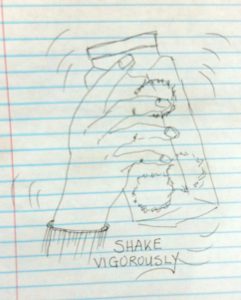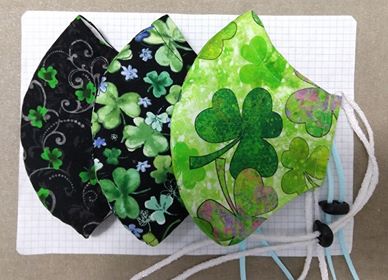
September 5. 2020 –
Hello, what have all of you been up to lately?
I’ve been super busy sewing facemasks. Sometimes until 3 in the morning.
Here are 24 masks completed in one day.
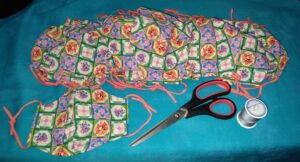
Not selling the masks, just asking for donations. Some people have donated eggs, quarters, potting soil, fabric, thread, dog food and dog treats, more thread, flower seeds, and cash money. One woman gave me a container of cat treats because she doesn’t have a dog. I told her that was fine because none of my dogs can read the label. One man said he couldn’t give me a bag of cow manure because he doesn’t have a cow. Making masks is fun and I’ve met lots of interesting people.
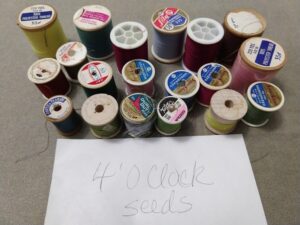
One man liked his mask so much he called me a rock star. Said the mask was ‘state of the art’; after which he asked if I could alter the pattern to include a space for the filters he uses. Yes, of course. No problem.
In between sewing and walking dogs, I’ve finally managed to complete the fenced dog exercise area. It’s large enough for all 4 dogs to run around, dig holes, or just catch some sunshine. While the dogs are busy, I’m out there with them pulling weeds, pruning shrubs, or doing general cleanup. Here is Jack looking very silly and very pleased with his digging work. He’s a digging fool.

A while back, the chicken named Dottie Junior decided to hatch some eggs. Of the 18-20 eggs, she managed to successfully hatch out 4 lovely baby chicks. Three are hens and have her coloring and are small in size (the first Dottie was a bantam), and the fourth is a rooster that looks like his grandfather who was a Light Brahma. Don’t know if I mentioned it before but a black domestic rabbit has adopted my yard and is getting along really well with the chickens. Here is the rabbit sharing lunch with the hens and rooster.
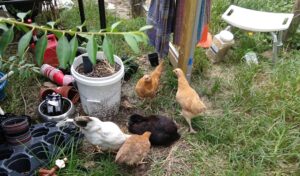
Sometimes I take a break from sewing and dogs to run errands or do a little shopping. Here is a table I picked up for not much money. All I wanted was a smallish table that would fit in a corner…never dreamed I’d end up with an antique cast iron pub table from England. (Sorry for the bad photo but this sucker was heavy!)
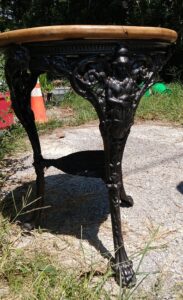
One local woman offers specialty fruits and veggies that she imports from her home country. I purchased 8 tamarillo fruits. These are also known as Tree Tomatoes. The currently acceptable botanical name is Solanum betaceum. To be honest, I’ve never actually eaten one; only bought them to save the seeds – did the fermenting thing that I learned years ago; hope it works. The aroma of the fruit is divine! If I can grow these and get a decent harvest, there will be some lovely fragrant jams happening. (The package of Nutter Butter cookies is for size reference.)

Now that the fenced dog exercise area is finally finished, my next project will be to create a screen/blind to hide the trash cans and such. Someone on Facebook Marketplace was selling all these shutters for a whopping ten dollars. They are perfect. Updates as they happen.
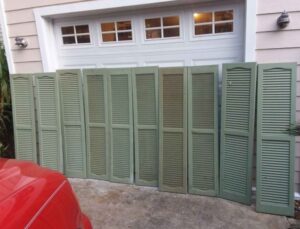
Over on The National Gardening Association, they featured American Beautyberry and I was thrilled to see some of my images in the article. I tried to attach a link but can’t remember the correct way to make that happen; try this…
https://garden.org/plants/group/beautyberries/
Well, that’s what I’ve been doing lately. What are y’all doing these days?
If anyone can teach me how to make the comment section work on this blog I might actually be able to read answers.


 ;
;


